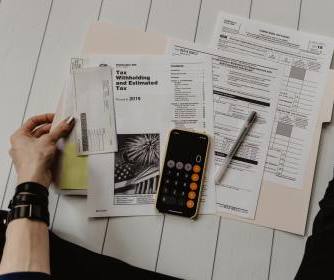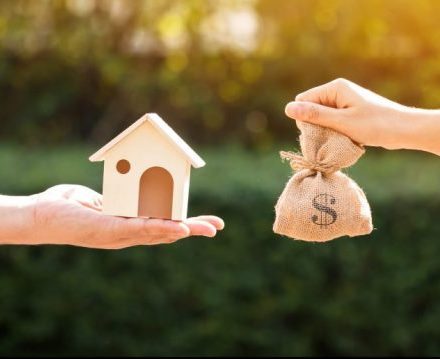Let’s talk about cash flow. If you’re new to investing, or trying to get into it, you have probably asked yourself many times “Will this property cash flow?” Or “How do I know if this property is going to make me any money?” These are great questions! And if you can’t answer them, you have no business buying the property!
When you are considering whether or not to add a property to your portfolio, it’s important that this property is actually an asset, right? By definition, an asset is something that produces income. So how do you know just by looking at property, or looking at a listing, that it’s going to produce income? Well, you have to run the numbers. That’s the only way to do it.
I don’t care how experienced you are, I don’t care how many times you’ve done this, what your neighbor says about the market, or just how hot that market is. You have to run the numbers for that specific property every single time. No shortcuts here.
But don’t stress! This is a super simple calculation!
Income-Expenses=Cash Flow.

The first thing that you’re going to do is gather all the income on the property. For a single-family home it’s probably just going to be the rent. The monthly rent that your tenant is paying is typically the only income you need to consider on a single family home with a long term lease.
If you are analyzing an apartment complex or something that might have other sources of income, such as a coin-operated laundry machine or storage units on-site, those are all income-producing assets and contribute to the income. Simply add up all the projected income on a monthly basis. If you are considering a property to rent as a short term rental on AirBnB or vrbo.com, simply add up all the projected income for a single month. If you have no idea how to do this, check out my Instagram for actionable advice and ensure you have a property manager on your team that can help!
Let’s look at a scenario considering a single family home.
After an analysis and confirming with our property manager, we know that conservative monthly rent is $1000. We need to consider that there’s going to be some vacancies. Every market has vacancies. So make sure you know what the average vacancy rate is in your market. Again, if you don’t know what this is, google it and ask your property manager to confirm. In this scenario, we’re going to consider a 10% vacancy. 10% of that $1000 monthly rental income is $100. So we’re going to take away $100 each month to conservatively accommodate this vacancy. So now, our total income is $900.
The next thing we’re going to look at are our expenses. You will need a landlord policy on all of your rentals, so be sure to have a great insurance agent on your team. Your agent can give you a quote or even an estimate based on your property, your market, and your goals/strategy that you can use to calculate your monthly insurance payment. In this situation we’re going to assume that insurance is $35.
Next is property tax. If you’re using an agent just ask them to look up the tax record. They can tell you exactly what the property tax is. If you’re not, Google it and you’ll find out exactly what the property tax is, it is public record and almost always listed on zillow. If you still can’t find it, simply call the county and the town/city and ask them to confirm how much the property taxes are on the property you are considering. In this scenario, taxes are $50 per month, or $600/year.

We’re also going to set aside 10% every month for repairs and maintenance. I always recommend this, especially for new investors or those who don’t have a lot of cash reserves.
Other expenses that need to be considered include HOA dues, lawn care or landscaping, utilities including electric, gas, water, etc.
It is SO important not to miss a single expense and one missed responsibility can completely wipe out your cash flow and crush your return!
In this case, we’re just going to say tenants are paying all the utilities, but the landlord is responsible for the trash. So we add $25 per month for trash.
Lastly, you need to consider management, which is typically 10% of monthly rent. So again, 10% of $1000 is $100.
So now you have all these expenses. But, we haven’t included one thing, the mortgage payment, if you have one. In this case, we will use $400.
Now, you’re going to add all of these expenses up.
Insurance………………….….$35
Taxes…………………………….$50
Repairs/Maintenance….$100
Trash…………………….……..$25
Management……………..$100
TOTAL $310
Mortgage…………………….$410
Total Expenses $710
You know from your above calculations that your income is $900 (rent minus vacancy).
Now that you have all that figured out, all you’re going to do is take your income and subtract out your expenses.
Income…………….…..$900
Minus Expenses….-$710
CASH FLOW $190
Now you know that your property is going to cash flow even after you pay all your expenses, even after you pay your manager, even after you pay all the fees, any utilities, and your mortgage payment. AND, you’re putting aside 10% for capital expenditures or other repairs every month. So you’re putting cash back into your pocket every single month.
Other cool things to note: your tenant is also paying down your mortgage balance every month, while the value of your property is going up. Additionally, you can write off the mortgage interest that your tenant is paying in order to offset your income.
There are four ways that you can get paid in real estate: cash flow, appreciation, amortization and tax benefits.
Is your job paying you in four ways?
Learn the most important skill you need as a successful real estate investor! Check out my investor course!


[…] of these factors play a significant role in your return of investment and you need to understand and consider them in order to make a wise […]
[…] House hacking could be used on a single-family home, a duplex, a triplex, or a quadruplex (aka a simple house, 2 unit building, 3 unit building or 4 unit building)! To maximize the power of this strategy, purchasing a multifamily means that you can live in one unit and rent out the others. Since your tenant, or tenants, are paying rent, your cost of living is decreased, or eliminated completely! AND, your tenants are paying down your mortgage, aka loan amortization, while the value of your property increases, aka appreciation. Additionally, you can depreciate the asset and write off the mortgage interest, alleviating your tax burden! So many benefits to buy and hold real estate investing besides cash flow! […]
[…] refinance, and you can use it again on the next property. Meanwhile, your first property is cash-flowing, appreciating, and creating massive tax breaks for […]
[…] The first property I bought in my IRA is a true 2% property, meaning that the monthly income is 2% of what I bought it for. This one property alone brings in over eleven hundred dollars a month. It’s a duplex in Marion, Illinois that I bought for $65,000- each side rents for $650 and after paying property managers, I add $1170 to my account every month. After collecting that income for a year, I invested in another syndication that pays me an additional $1200 per quarter. 6 months later, I did it again and get paid another $1000 per quarter. My initial $70,000 IRA is now conservatively worth over $130,000. This is a super powerful way to build wealth! […]